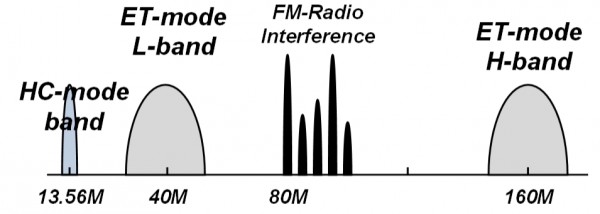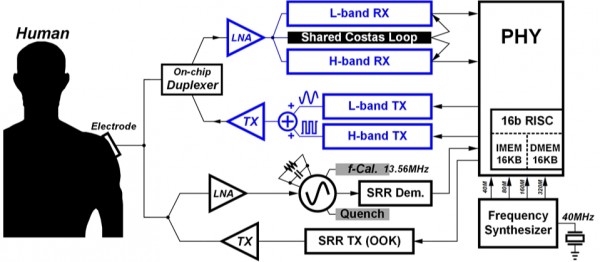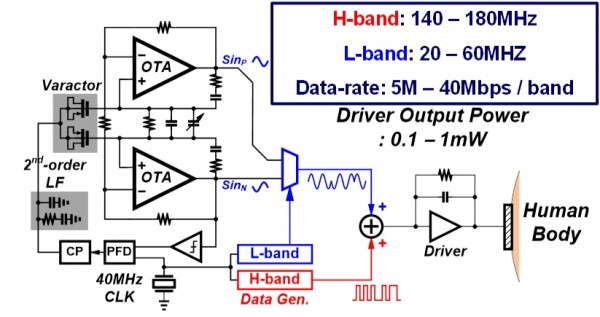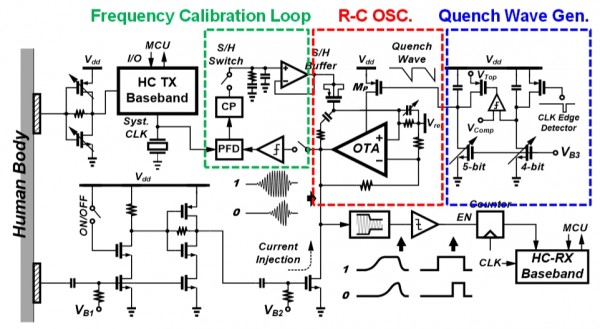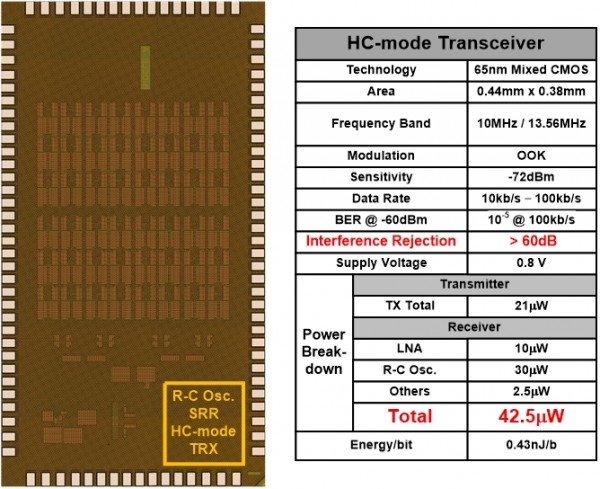Biocle A
본문
Overview
Recently, smart phones or head mount displays enable high-definition (HD) video stream and image data to be shared with friends while the wearable smart sensors continuously monitor and send user’s physiological information to the smart watch. The body channel communication (BCC) which uses the human body as the communication channel has shown better human-friendly interface and energy-efficient performance compared with air channel communication. However, most of the previous BCC researches used only the frequency band below 100 MHz and were only focused on either low data rate (<10Mb/s) healthcare applications or high data rate (60Mb/s) multimedia data transfer. Its available channel bandwidth was limited to <100MHz and the interference from FM radio due to body antenna effect had a significant effect on its performance.
In this project, we propose a low-energy dual-wideband full-duplex BCC transceiver for entertainment applications and an ultra-low-power high Q-factor super-regenerative receiver for healthcare applications with the following five key features. First, from channel measurement results, the body channel bandwidth is extended up to 200 MHz so that two channels of 40 MHz bandwidth, one centered at 40 MHz and the other at 160 MHz, enable the high-speed communication for the entertainment mode (ET-mode). The data rate can be maximized at the burst mode by combining both 40 MHz band (L-band) and 160 MHz band (H-band) together. In addition, the strong FM-radio interference at 80-110 MHz frequency band caused by the body antenna effect can be effectively suppressed because the H-band and the L-band are far away from the interference band. Second, on-chip R-C duplexer is proposed to effectively separate each band while enabling full-duplex communication. Third, the sine wave and the rectangular wave modulation are adopted in the transmitter for the L-band and the H-band, respectively, with 30 dB SNR improvement. Fourth, the shared loop dual-band receiver with 25% power reduction is employed. At last, a super-regenerative transceiver with R-C oscillator at 13.56 MHz is proposed for the low-speed ultra-low-power-consuming healthcare mode (HC-mode). As a result, we can achieve the maximum data rate of 80 Mb/s with the 79 pJ/b energy consumption in the ET-mode and the power consumption of 42.5 μW with the Q-factor over 1000 in the HC-mode.
